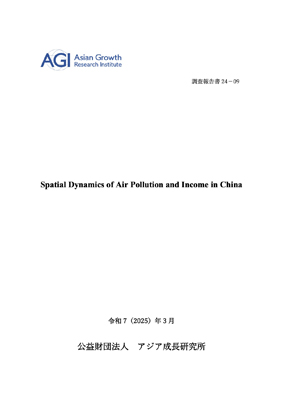Spatial Dynamics of Air Pollution and Income in China

| Author | Alvaro DOMINGUEZ |
|---|---|
| Affiliation | Asian Growth Research Institute |
| Date of Publication | 2025.3 |
| No. | 2024-09 |
| Download | 5.3MB |
Contents Introduction
We examine the spatial distribution of air pollution, specifically PM2.5 levels, and income across 285 prefectural-level and above cities in China. Our analysis combines static spatial dependence techniques to identify clusters of high pollution (hot spots) and low pollution (cold spots), highlighting a strong negative relationship between income and air pollution, with wealthier regions typically enjoying better air quality. To deepen this understanding, we apply spatial Markov chains to evaluate whether regions are converging over time in terms of air pollution and income levels. This integrated approach not only uncovers spatial patterns but also tracks temporal dynamics, providing insights that can inform strategies to enhance public health, promote environmental equity, and improve overall quality of life.
